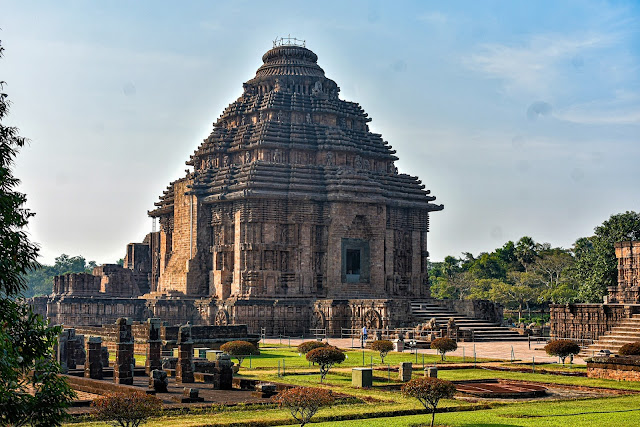Vasco da Gama lands at Calicut, May 20, 1498
|
Q.1. Renowned Portuguese explorer Vasco da Gama discovered the sea route to India in _____.
(a) 1490
(b) 1492
(c) 1496
(d) 1498
Q.2. To whom the statement “The soul of India lives in villages” has been attributed?
(a) Mahatma Gandhi
(b) Vinoba Bhave
(c) Gopalakrishna Gokhale
(d) Lala Lajpat Rai
Q.3. Who was the political guru of Mahatma Gandhi?
(a) Gopal Krishna Gokhale
(b) Bal Gangadhar Tilak
(c) Dadabhai Naoroji
(d) Pherozeshah Mehta
Q.4. The first Governor-General of Bengal was________.
(a) Warren Hastings
(b) Robert Clive
(c) Canning
(d) William Bentinck
Q.5. The last Governor-General and the first Viceroy of India under the British crown was
(a) Lord Canning
(b) Warren Hastings
(c) William Bentinck
(d) Lord Dalhousie
Q.6. On what pretext, Lord Dalhousie annexed the state of Oudh to the British Empire in India?
(a) Doctrine of Lapse
(b) Policy of Subsidiary Alliance
(c) Maladministation of the State
(d) Financial instability
Q.7. Who among the following abolished the Sati System in 1829 A.D.
(a) Lord Curzon
(b) Lord Wellesley
(c) Lord Lytton
(d) Lord William Bentinck
Q. 8. Who led the revolt from Lucknow against the British during the mutiny of 1857?
(a) Begum Hazrat Mahal
(b) Kunwar Singh
(c) Tantia Tope
(d) Nana Saheb
Q.9. The first session of Indian National Congress was held at ________
(a) Calcutta
(b) Bombay
(c) Delhi
(d) Allahabad
Q.10. The Bhoodan Movement was launched by
(a) Baba Amte
(b) Mahatma Gandhi
(c) Vinoba Bhave
(d) Rammanohar Lohia
Answers
1-d
Notes:On 24th December, 1524, Vasco da Gama died in Cochin (now Kochi), a major port in India.
2- a
Notes:Gandhiji had said that the soul of India resides in its villages.
3- a
Notes: Gopal Krishna Gokhale was a mentor to Mahatma Gandhi and Mohammed Ali Jinnah. Gokhale had described Jinnah as "an ambassador of Hindu-Muslim unity". Once Jinnah had expressed the desire to become "the Muslim Gokhale".
4- Warren Hastings
Notes:Due to the passing of Regulating Act 1773, the position of “Governor of Bengal” got converted into that of "Governor-General of Bengal".
Warren Hastings was the first Governor-General of Bengal.
By Charter Act of 1833, the post name of Governor-General of Bengal again converted into "Governor-General of India"
First Governor-General of India was William Bentinck.
When the rule of the East India Company came to an end and authority passed to the British crown, Canning, the first governor-general of the imperial government, received also the title of viceroy.
5-a
Notes:Due to the passing of Regulating Act 1773, the position of “Governor of Bengal” got converted into that of "Governor-General of Bengal".
Warren Hastings was the first Governor-General of Bengal.
By Charter Act of 1833, the post name of Governor-General of Bengal again converted into "Governor-General of India"
First Governor-General of British ruled India was William Bentinck.
When the rule of the East India Company came to an end and authority passed to the British crown, Canning, the first governor-general of the imperial government, received also the title of viceroy.
6-a
Notes:Doctrine of Lapse was introduced by Lord Dalhousie in 1848. This law banned an Indian prince without a natural heir from adopting a successor. Oudh was annexed to the British Empire in India in 1856.
7-d
Notes:The Bengal Sati Regulation which banned the Sati practice in all jurisdictions of British India was passed on December 4, 1829 by the then Governor-General of the British-ruled India Lord William Bentinck who also happened to be the first governor general.
8-a
Notes:Begum Hazrat Mahal was one of the important leaders of the Revolt of 1857 which shook the very foundation of the British rule in India.
She refused to accept the pension offered by the British and chose to die unknown in alien country in 1879. She is buried in a grave in Kathmandu.
9-b
Notes:The first session of Indian National Congress was held at Mumbai in 1885 from 28 to 31 December. It was attended by 72 delegates. The first president of the Indian National Congress was Womesh Chunder Bonnerjee and the first General Secretary was A O Hume.
10-c
Notes:The Bhoodan Movement (Land Gift movement) was launched by freedom fighter and Gandhi disciple Vinoba Bhave. The Bhoodan movement was a voluntary land reform movement in India persuading rich people to give up a part of their land which could then be distributed among the landless poor.





